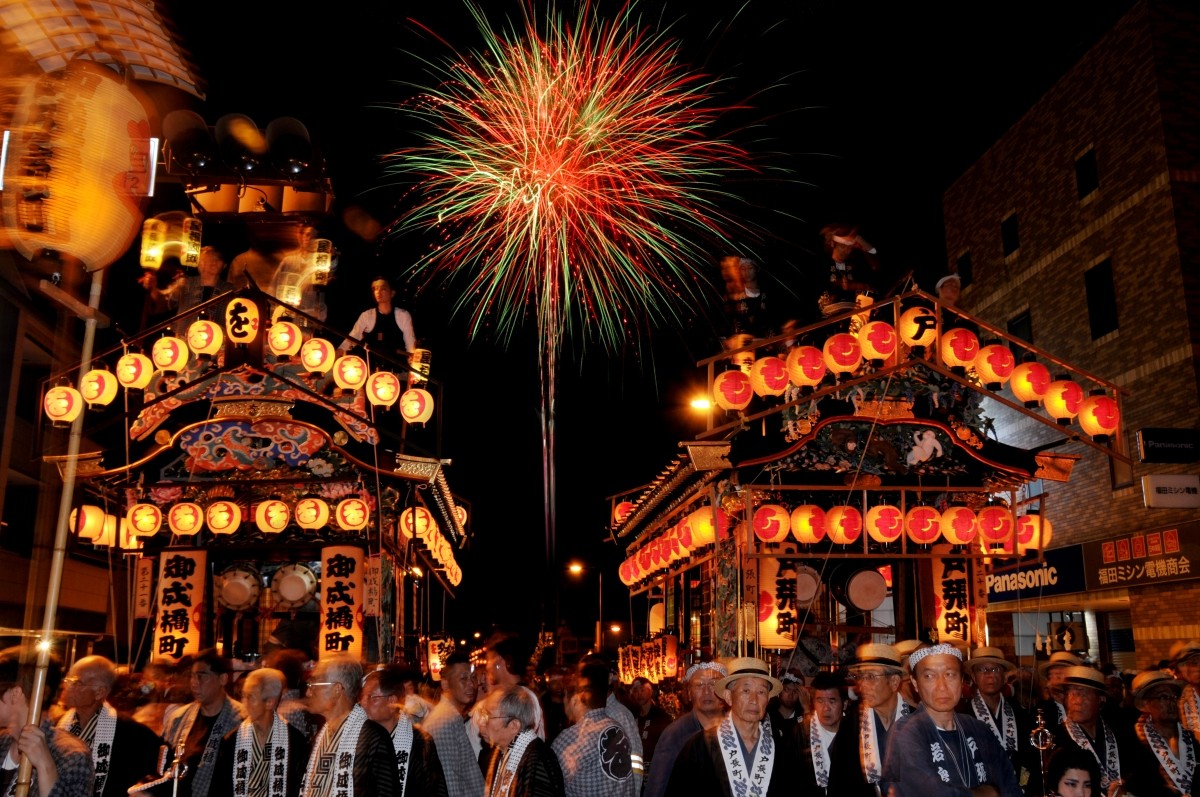
Image provided by: Kanuma City Tourism Exchange Division
Speaking of autumn in Japan, the spectacular view of beautiful autumn leaves, delicious seasonal flavors... Of course, these are also the wonderful charms of autumn in Japan. However, this time we would like to introduce the "Autumn Festival".
"What are the autumn events in Japan?" "What kind of festivals are there?" "Can anyone participate?" "I want to experience more Japan culture!" … To you who are thinking about such questions, FUN! JAPAN proudly recommends a thorough explanation of the charm of autumn festivals in Japan.
In this article, we will introduce 10 recommended autumn festivals from all over Japan. This is a complete guide to enjoying autumn festivals in Japan with peace of mind, including the characteristics and highlights of each festival, as well as access and useful information when actually visiting.
*If you purchase or make a reservation for the products introduced in the article, a portion of the sales will be FUN! JAPAN.
What is the Autumn Festival? The History and Meaning
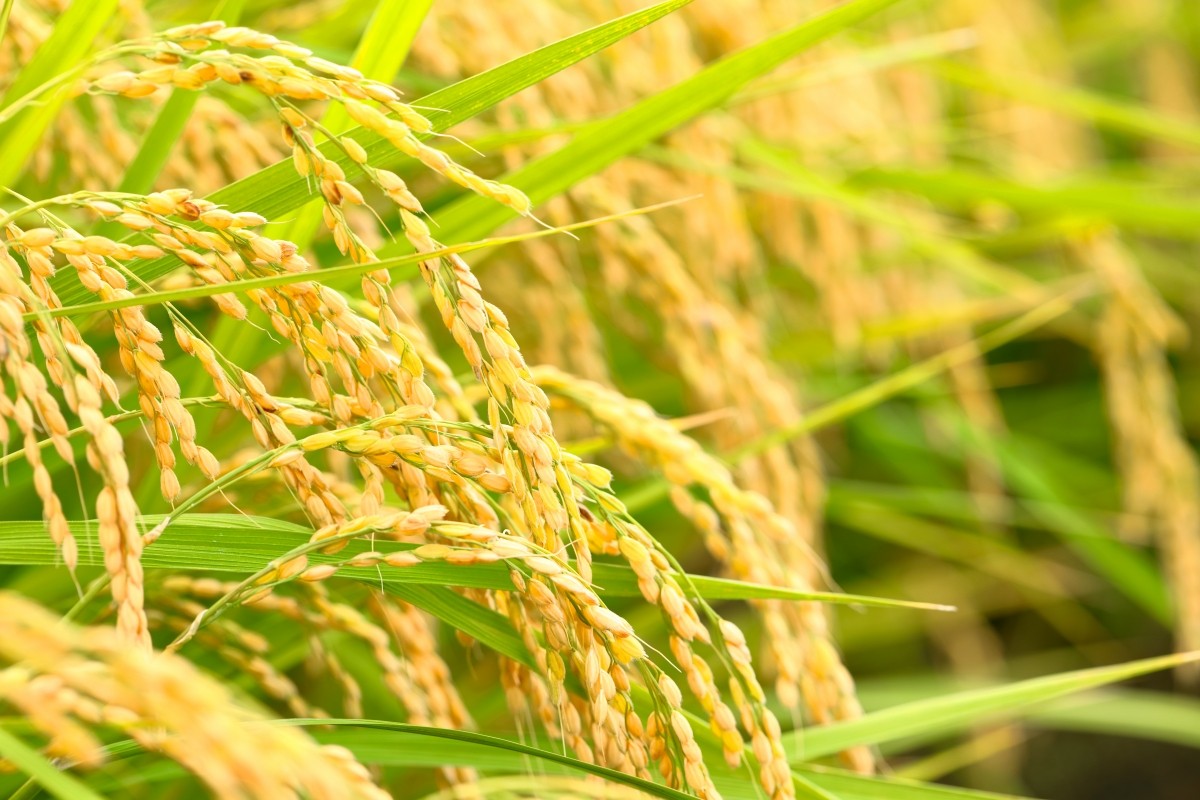
At the heart of Japan's festivals are gratitude and prayer to nature and the gods who inhabit it. Autumn festivals are especially important autumn events held to thank the gods for the harvest of the year.
The specific origin of autumn festivals varies from region to region, but many of the famous large festivals in modern times are said to have been established around the Edo period.
At festivals, there are a wide variety of expressions, such as the portable shrine called mikoshi, the tall floats called dashi, and food stalls that have been passed down from generation to generation in the region, parade through the city, and votive dances such as kagura are performed at shrines and other places. These are not just entertainments, but also play an important role in uniting local people and deepening the "bonds of the local community" that are passed down through generations. Autumn festivals are an essential autumn event for learning about Japan's culture.
Differences From Spring and Summer Festivals, and the Unique Feelings of Autumn Festivals
Japan's festivals have different faces for each season.
Spring Festival
Celebrate the start of agricultural work and pray for a good harvest.
Summer Festival
It is held with meanings such as praying for the elimination of plagues, praying for warding off typhoons and insect damage, and Obon (Bon Festival introduced from Buddhism). There are many open and lively things such as fireworks and Bon dances.
Autumn Festival
It is dedicated for the joy and gratitude of the harvest of the year. Especially in rural areas, autumn festivals are held mainly by shrines and local communities, and various events unique to each shrine, such as mikoshi and kagura dedication, are held at each shrine.
Why Autumn Festivals are Recommended
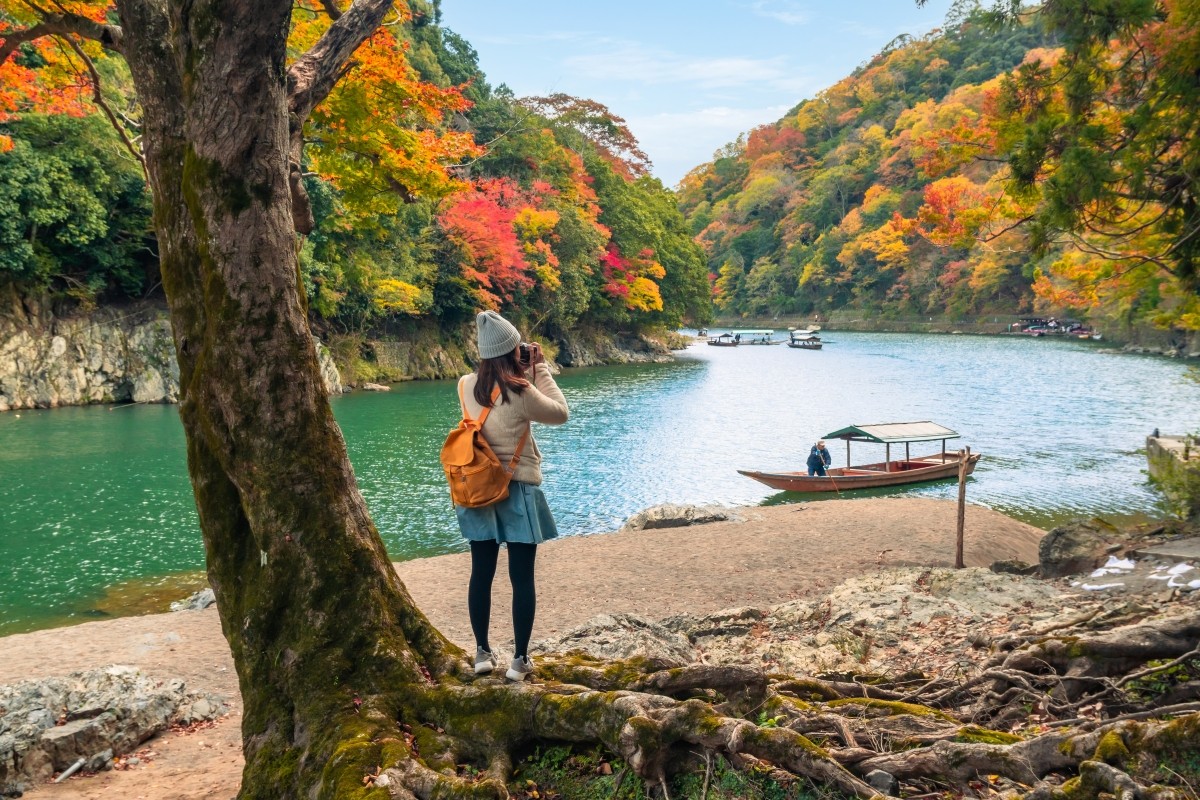
Synergy with the Autumn Foliage Season
Enjoy the fiery autumn leaves during the day and immerse yourself in a magical festival world at night. It is the perfect combination that allows you to enjoy the beautiful nature and traditional culture of Japan at once.
Comfortable Climate
Autumn, before the summer heat eases and the full-blown winter chill arrives, is ideal for outdoor sightseeing. You can enjoy autumn events in a cool and comfortable climate.
Deep Japanese Culture Experience
It's a great opportunity to get up close and personal with the traditions and culture rooted in each region, as well as the lives and breath of the locals. It is especially recommended for those who want to experience a deeper Japanese culture that is more rooted in the community. If you experience several autumn festivals, you will be able to realize how unique the culture is rooted in different regions.
Looks Great on Social Media
People dressed in traditional attire, elaborately crafted floats and food stalls, and the magical lantern light that colors the night are full of moments that you will want to capture in photos and videos. It is also perfect for sharing your excitement on social media.
Handpicked! 10 Autumn Festivals in Japan that Impress Foreigners and Japanese People Alike
Here are 10 attractive and unique autumn festivals that foreign travelers from all over Japan should experience. Please refer to the highlights of each festival and advice on how to enjoy your trip even more.
When and Where are Autumn Festivals Held in Japan?
Autumn festivals are held in various parts of Japan from September ~ November. Autumn festivals are held in many regions of Japan, regardless of size.
Kishiwada Danjiri Festival【Kishiwada City, Osaka Prefecture】

The Kishiwada Danjiri Festival, which boasts a history of more than 300 years since the middle of the Edo period, is known for its overwhelming power and speed. The "yarimawashi" (float turning) of a danjiri festive float weighing several tons turning the corner of the road at breakneck speed is a masterpiece! The soul-stirring sounds of drums and flutes resonate, and the excitement of the audience reaches its peak.
💡A word from FUN! JAPAN: If you want to see "yarimawashi" up close, be careful of dangerous areas and follow the restricted line. In between festivals, be sure to try Senshu's famous "water eggplant pickles".
Kishiwada Danjiri Festival
- Date and time: [September Festival] September 13, 2025 (Sat) 6:00~22:00, 14 (Sun) 9:00~22:00 [October Festival] October 11 (Sun) 6:00~22:00, 12 (Sun) 7:00~22:00
- Access: [September Festival] A short walk from Kishiwada Station and Haruki Station [October Festival] A short walk from Higashi-Kishiwada Station, Shimomatsu Station, and Kumeda Station
- Fee: Free admission *Paid seats are sold by private vendors
- Official website: here
Tsuruoka Hachimangu Shrine Festival【Kamakura City, Kanagawa Prefecture】
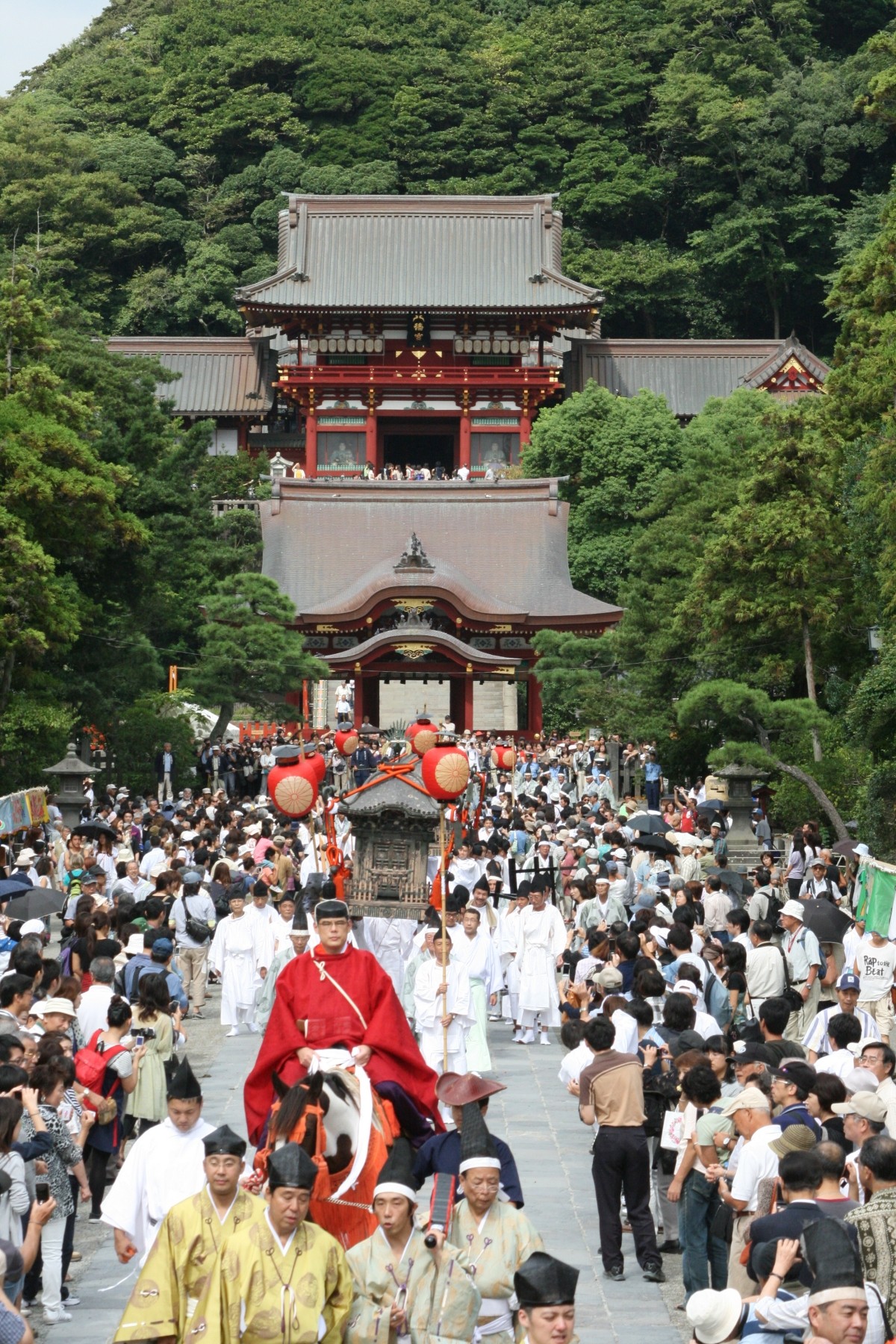
For three days from September 14th to 16th every year, a grand festival is held at Tsuruoka Hachimangu Shrine, one of the representative shrines of Kamakura. According to the Japan history book "Azuma Kagami" that records the history of the Kamakura period, it is said to have originated on the 15th of the 8th month ( lunar calendar), 1187 (Bunji 3), and has been an event that has continued for 800 years since then.
On the last day, the Yabusame ritual is held, in which a horse-back archery is performed at a target, and a procession of the Shinkosai Festival, in which a large procession carrying a mikoshi crosses Wakamiya Street, is held, and it is crowded with many spectators.
💡A word from FUN! JAPAN: The Yabusame ritual is popular and crowded. At the Shinkosai Festival, the "Yaotome Dance" dedicated under the Nino torii gate is also a sight to behold. There are also plenty of sightseeing in the surrounding area, such as the Great Buddha of Kamakura and Hokokuji Temple with its bamboo forest.
Tsuruoka Hachimangu Shrine Festival
- Date and time: September 14 (Sun) ~ 16 (Tue), 2025
- Venue: Tsuruoka Hachimangu Shrine precincts
- Access: 10 minutes walk from Kamakura Station
- Admission: Free
- Official website: here
Nagasaki Kunchi【Nagasaki City, Nagasaki Prefecture】
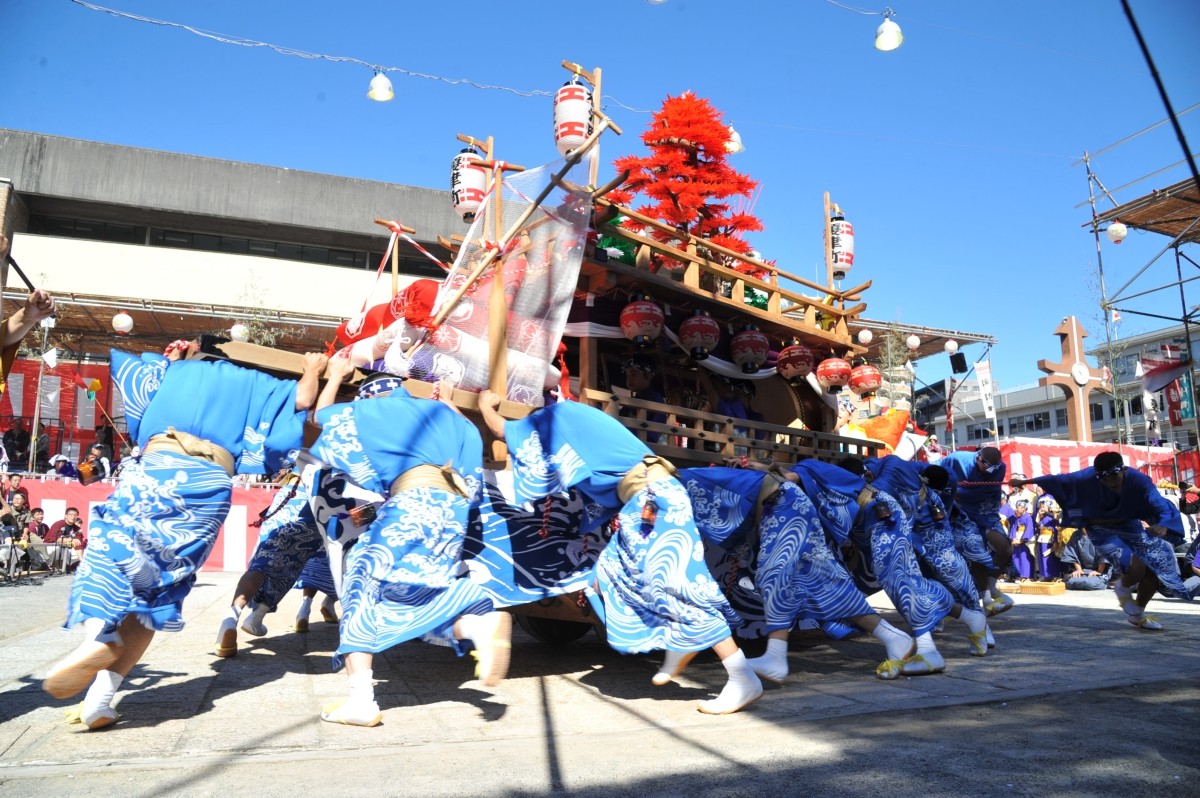
It is a large autumn festival of Suwa Shrine, the god of Nagasaki, which has been held since 1634 in the early Edo period, and is held for three days from October 7 every year. The highlight is the exotic votive dance "Hono Odori" unique to Nagasaki, which flourished due to the Nanban trade (trading with foreigners during the Edo isolation period). The area in Nagasaki City is divided into seven groups, and once every seven years, each area takes turn to perform the votive dance, so a different performance is performed every year. The performances with the taste of each town are like looking at a historical picture scroll.
💡A word from FUN! JAPAN: The bleachers at the "Central Park Kunchi Viewing Ground" are ticketed for a fee, but you can also see some performances in the "Niwasaki Mawari" in the city. Nagasaki's famous gourmet food, castella and champon, are also a must.
Nagasaki Kunchi
- Date and time: October 7th, 8th, and 9th every year *Times vary depending on the location and event
- Access: Nagasaki city center. Can be traveled by tram or bus
- Fee: [Central Park Kunichi Viewing Ground] 4,500 yen for 1 person over 2 years old ~ *There are many places where you can watch for free
- Official website: here
Hachiman Festival (Autumn Takayama Festival)【Takayama City, Gifu Prefecture】
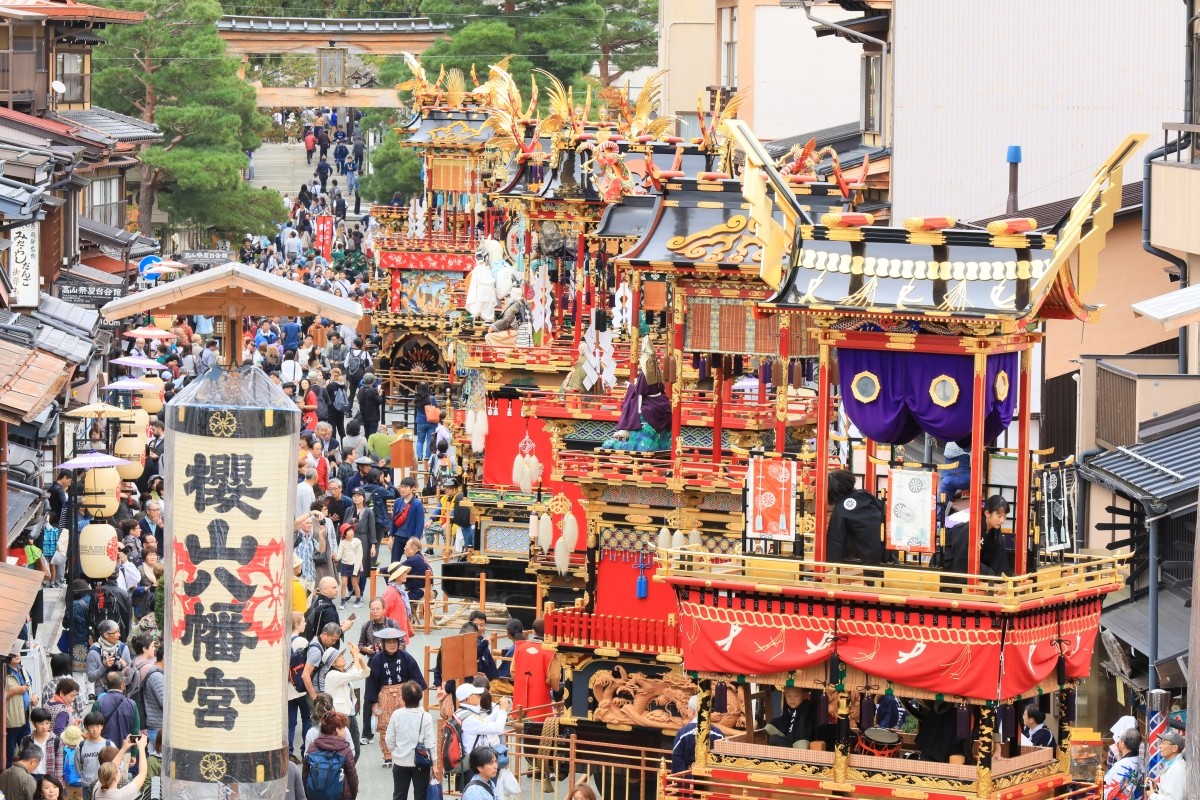
One of the three major Hikiyama festivals in Japan, the Takayama Festival. The spring Takayama Festival is held on April 14th and 15th every year, and the autumn Takayama Festival is held on October 9th and 10th every year called the "Hachiman Festival". The sight of gorgeous yatai (*1) dragged out of the yatai warehouse from the precincts of Sakurayama Hachimangu Shrine to Omotesando is spectacular! On the afternoon of the 9th, four food stalls will parade through the festival area.
The "Votive Karakuri", which is a spectacle of elaborate dolls presented from the yatai, is performed twice a day on both days at the Sakurayama Hachimangu Shrine precincts with a cloth bag stand.
In addition, the evening festival, which begins on the evening of the 9th, is a fantastic sight with more than 100 lantern stalls going around the town.
*1 The "yatai" here are not mobile sales offices like food stalls, but floats decorated with cultural decorations
💡A word from FUN! JAPAN: We recommend strolling through the "three towns" where the old townscape remains, and enjoying local delicacies such as Hida beef nigiri sushi and mitarashi dango.
Hachiman Festival (Autumn Takayama Festival)
- Date and time: October 9th and 10th every year *Times vary depending on location and event
- Access: Walking distance from Takayama Station
- Admission: Free
- Official website: here
Sawara Grand Festival【Katori City, Chiba Prefecture】
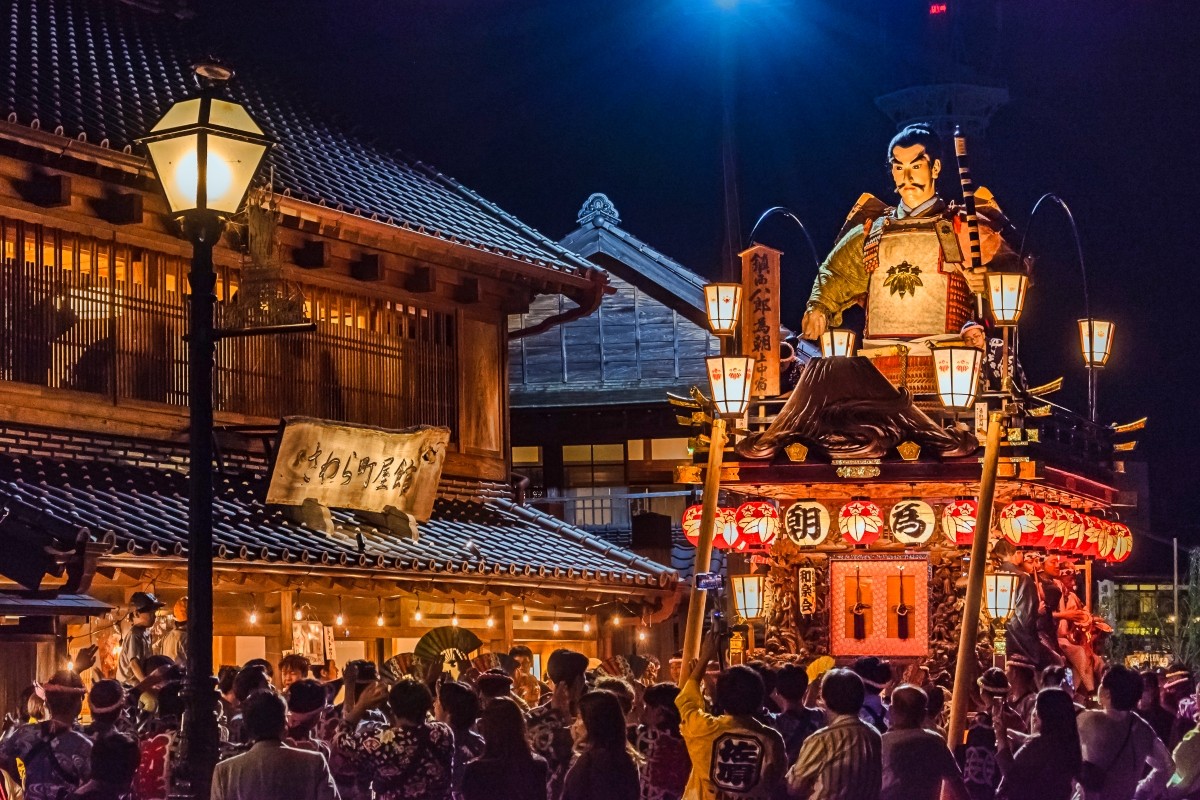
"Sawara no Taisai" (Sawara Grand Festival) is a general term for the Yasaka Shrine Gion Festival, which is held every year on Fridays, Saturdays, and Sundays after July 10 in Sawara, Katori City, Chiba Prefecture, and the Suwa Shrine Autumn Festival, which is held on Fridays, Saturdays, and Sundays on the second Saturday of October. The two festivals of summer and autumn are collectively called "Sawara's Grand Festival".
It is counted as one of the three major float festivals in the Kanto region, and is characterized by a huge large doll displayed on top of the float. A 4-meter-tall doll with a motif of a historical figure is dragged around the quaint townscape called Koedo ('Little Edo' - a nationally designated Important Preservation District for Groups of Traditional Buildings).
💡A word from FUN! JAPAN: You can also enjoy a boat tour along the Ono River. We also recommend the famous eel dishes, black soba noodles, and local sake.
Sawara Grand Festival
- Date and time: [Summer Festival] July 11, 2025 (Friday) ~ July 13, 2025 (Sunday) [Autumn Festival] October 10, 2025 (Friday) ~ October 12, 2025 (Sunday)
- Access: Walking distance from Sawara Station
- Admission: Free
- Official website: here
Kanuma Autumn Festival【Kanuma City, Tochigi Prefecture】
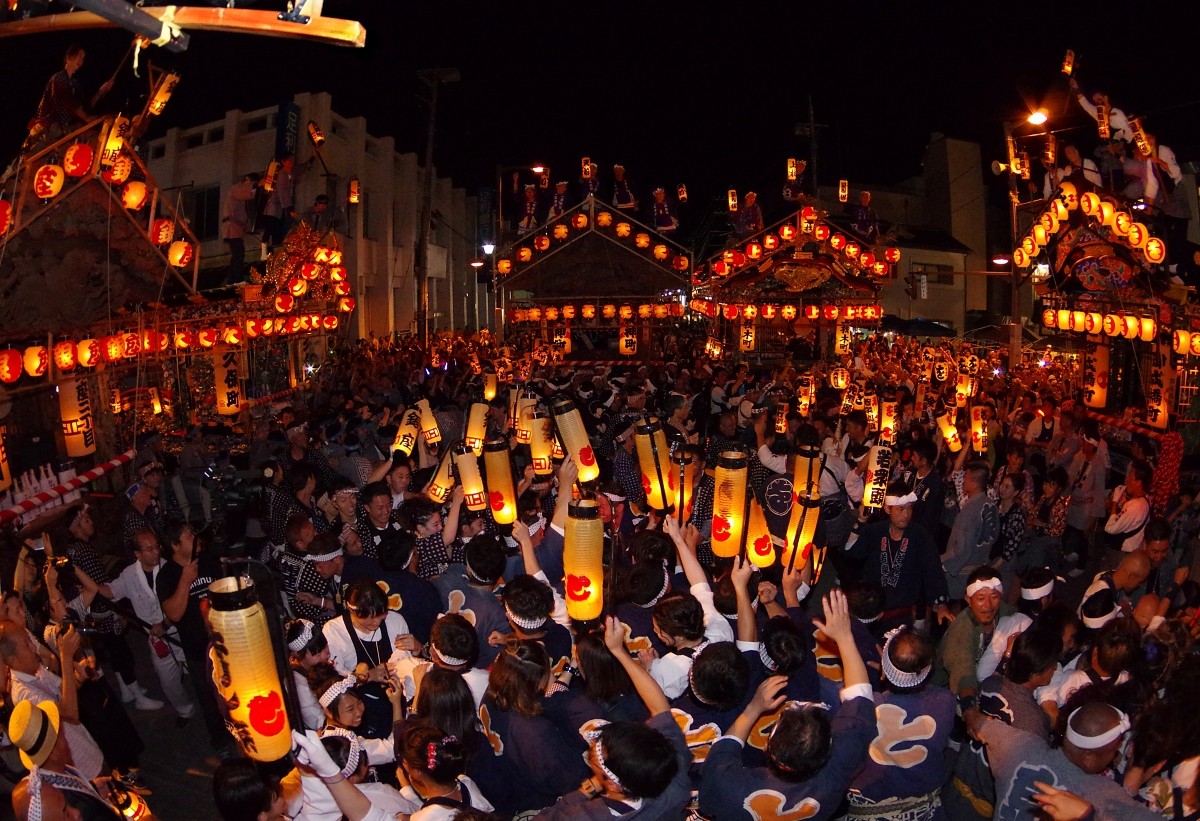
The Kanuma Autumn Festival, which has a history of 400 years, is designated as an important intangible folk Cultural Property by the country and is registered as a UNESCO Intangible Cultural Heritage, and is held on the second Saturday and Sunday of October every year. Gorgeous carved "sculpture stalls" depart from each city and gather at the shrine. The "buttsuke," in which two or more food stalls face each other on the road and compete in brave music, is the biggest attraction of the festival, and the music and cheers echo throughout the city.
At night, lanterns are lit up in the food stalls, creating an ethereal atmosphere.
💡A word from FUN! JAPAN: From around 17:00 on the first day, sculpture stalls with lanterns will return to each town with music. The parade of food stalls from around 14:00 on the second day is also a sight to behold. Local handmade soba noodles are also recommended.
Kanuma Autumn Festival
- Date and time: October 11 (Sat) and 12 (Sun), 2025
- Access: Free shuttle bus from Shin-Kanuma Station during the festival period
- Price: Paid seats are undecided *Free viewing is also possible
- Official website: here
Niihama Taiko Festival【Niihama City, Ehime Prefecture】
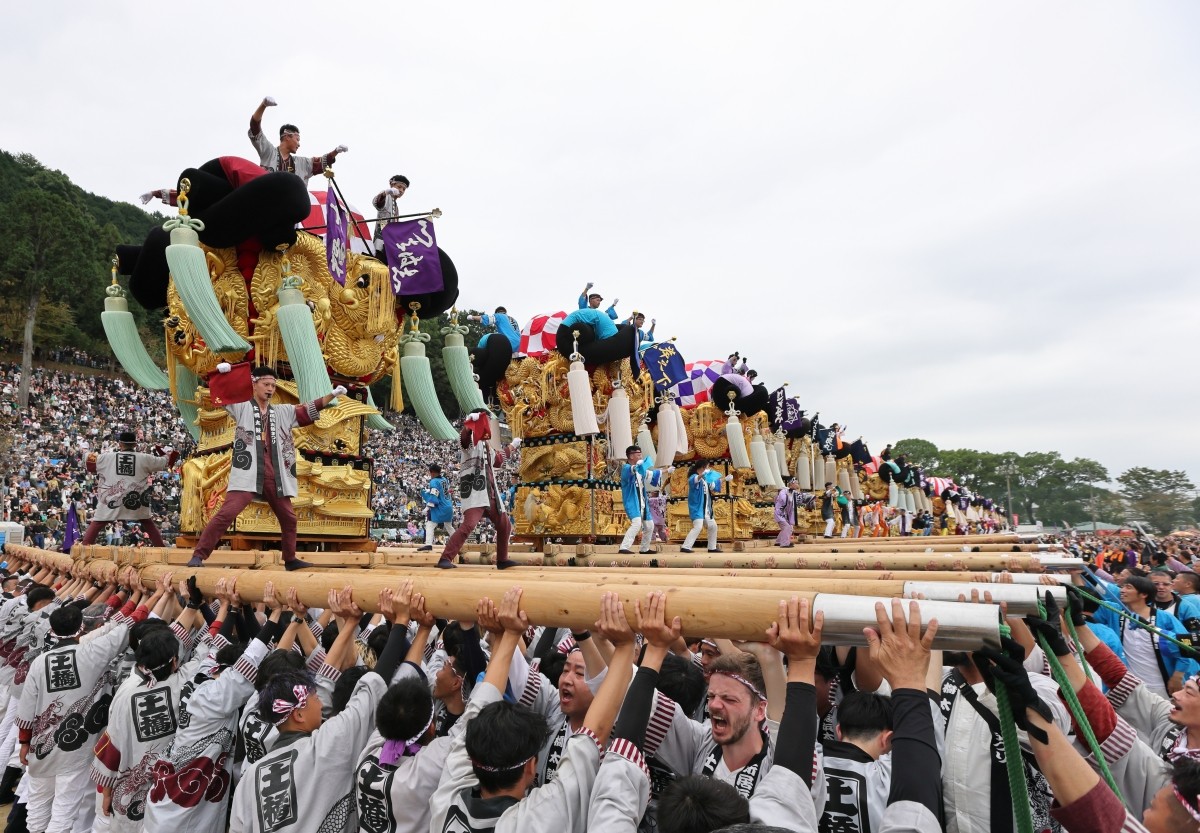
The "Niihama Taiko Festival" is one of the three major festivals in Shikoku, and there are 54 glittering drum stands decorated with gold and silver threads in the city. Performances such as "Kakikurabe" that make use of the characteristics of each district will be shown.
The sight of the magnificent and gorgeous drum stand that is about 5.5 meters high and weighs about 3 tons is a sight to behold, as more than 150 bearers lift it high to the sky.
💡A word from FUN! JAPAN: In particular, the "Yose Taiko" held at Yamane Ground, Niihama City, the largest "Kakikurabe" venue in the city, is the biggest highlight of the festival. The fried chicken called "Zanki" is a recommended local gourmet dish.
Niihama Taiko Festival
- Date and time: October 15 (Wed) ~ 18 (Sat), 2025
- Access: Free shuttle bus operates from Niihama Station during the festival period *Subject to change depending on the year
- Admission: Free
- Official website: here
Jidai Festival【Kyoto City, Kyoto Prefecture】
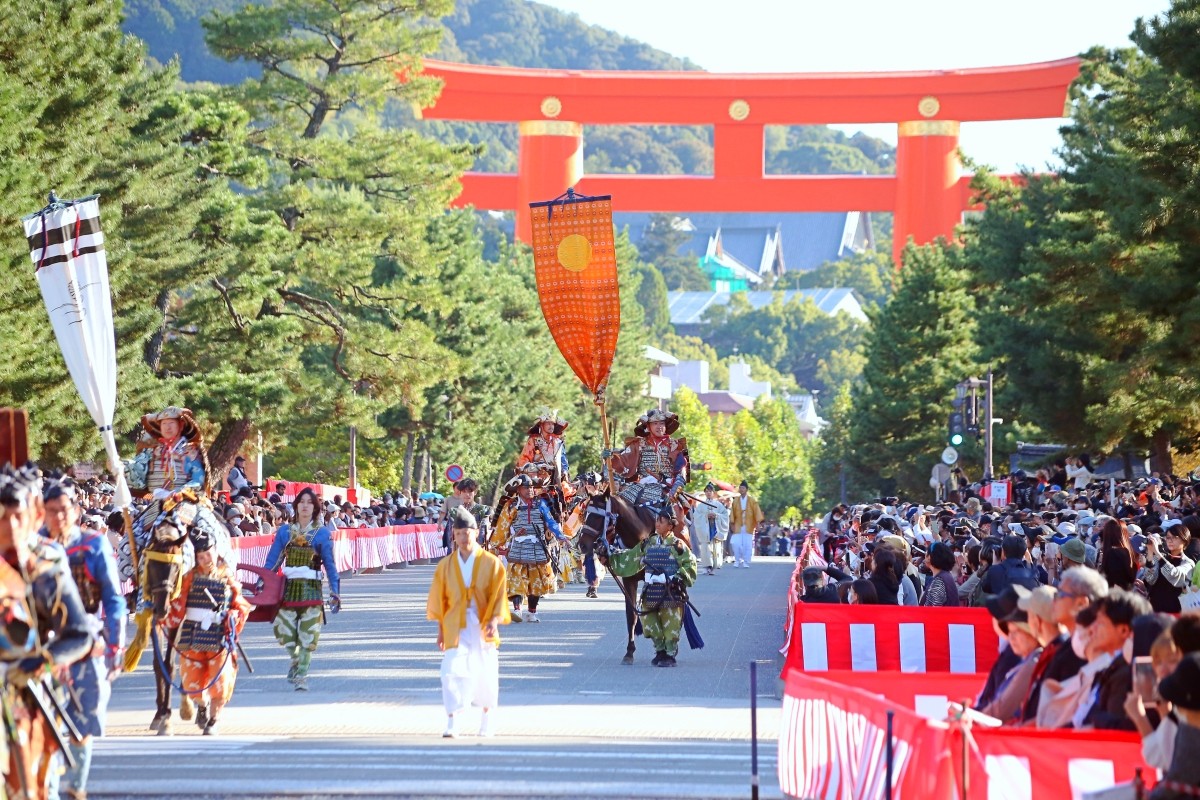
The "Jidai Festival", which began to commemorate the 1100th anniversary of the relocation of the capital to Heian County, is attractive for its gorgeous large procession where Japan's historical customs picture scrolls are reproduced in real life right in front of you. From the Meiji Restoration to the Heian period, the costumes of each era are faithfully reproduced based on rigorous historical research, and a procession of about 2,000 people and about 2 km parades through the capital of Kyoto.
Anyone can watch freely, but we also recommend the paid bleachers that allow you to see comfortably in an easy-to-see position.
💡A word from FUN! JAPAN: The procession departs from Kyoto Gyoen at noon and arrives at Heian Shrine in the afternoon. It is also easily accessible from Kyoto City, so you can enjoy sightseeing along with nearby World Heritage Sites, Kyoto cuisine, and Japanese sweets such as matcha.
Jidai Festival
- Date and time: October 22, 2025
- Venue: Heian Shrine ~ Kyoto Imperial Palace
- Access: [Heian Shrine] 10 minutes walk from Higashiyama Station [Kyoto Imperial Palace] 5 minutes walk from Imadegawa Station
- Fee: [Paid bleachers] 4,000 yen~ *Free viewing is also possible
- Official website: here
👉 Click here to purchase paid seats
Karatsu Kunchi【Karatsu City, Saga Prefecture】
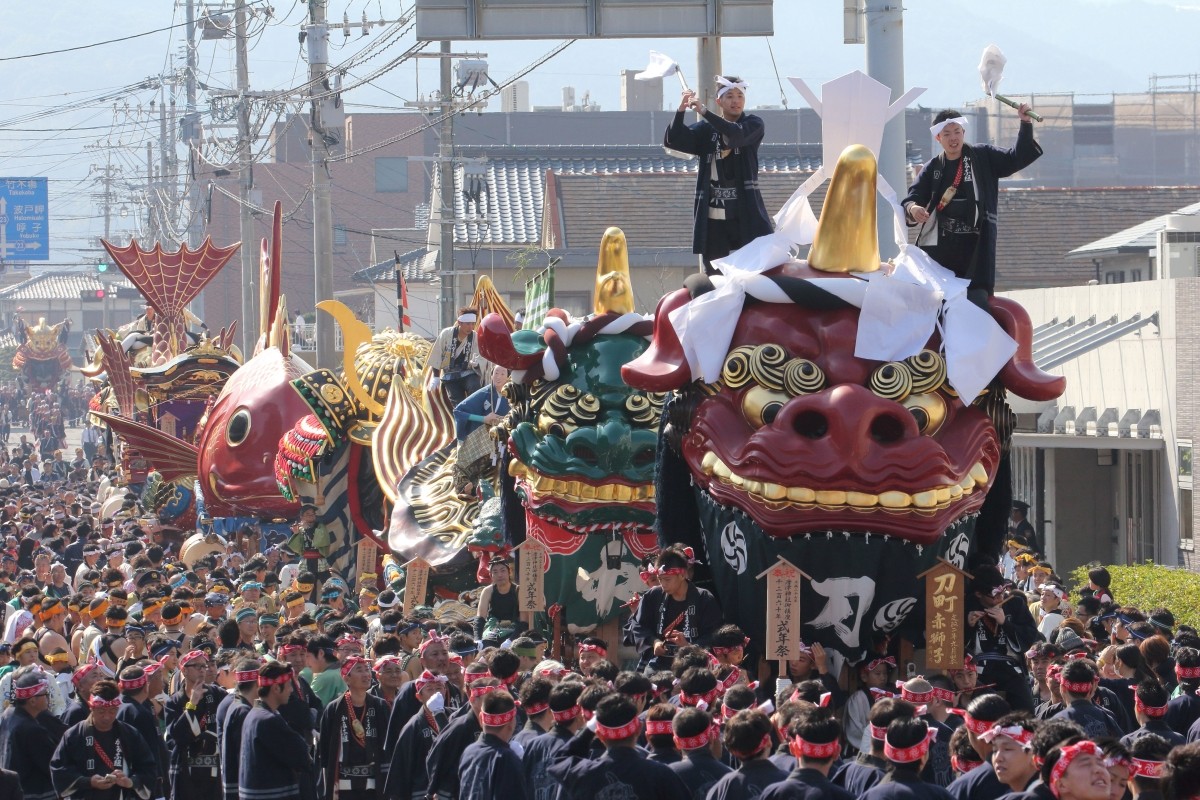
"Karatsu Kunchi" is the autumn festival of Karatsu Shrine held every year from November 2nd to 4th in Karatsu City, Saga Prefecture. It is said to have started around the Kanbun period (1661~1673) of the Edo period, and is registered as a UNESCO Intangible Cultural Heritage.
A huge hikiyama (*2) weighing 2~5 tons parades around the former Karatsu Castle to the sound of flutes and drums. Fourteen gorgeous Hikiyamas, including red lions, turtles, Urashima Taro, and sea bream, run around the town with the chants of "Enya, Enya" and "Yoisa, Yoisa".
(*2) A large ornament that is pulled and moved at festivals. Depending on the region, the way the locals call the festival floats may be different such as dashi and yatai.
💡A word from FUN! JAPAN: On November 3rd, Hikiyama will gather on the west beach and be dragged and dragged out. Nearby scenic spots such as Karatsu Castle and Rainbow Matsubara are also recommended. Be sure to check out the gourmet food unique to Karatsu, such as Yobuko's squid and other seafood, as well as Saga beef.
Karatsu Kunchi
- Date and time: November 2 (Sun), 3 (Mon), 4 (Tue), 2025
- Access: Within a 30-minute walk from Karatsu Station
- Admission: Free
- Official website: here
Pantupunaha【Miyakojima, Okinawa Prefecture】

"Pantupunaha" is held on Miyakojima, a remote island in Okinawa Prefecture, in 9th month of the lunar calendar (usually around October). Three gods wearing masks and smearing mud all over their bodies appear, and pray for good luck and good health by smearing mud on houses and people. This mud is believed to have the power to ward off evil. Along with nine other traditional events, including Namahage in Akita Prefecture, it was registered as a UNESCO Intangible Cultural Heritage in 2018 as "Raiho-shin, ritual visits of deities in masks and costumes".
💡A word from FUN! JAPAN: The location is in the Shimajiri area. Currently, the dates and locations are private, making it an auspicious event for locals. The beautiful beaches and rich nature are also attractive to Miyakojima, but if you are interested in "Pantupunaha", why not experience it?
Pantupunaha
- Date and time: Closed
- Access: Taxi or bus from Miyako Airport
- Admission: Free
- Official website: here
Points & Precautions to Enjoy the Autumn Festival More

Here are some points and precautions you need to know to enjoy Japan's autumn festivals to the fullest.
Clothing and Belongings
Festival venues often require long walks, so comfortable and comfortable shoes are essential. It can get cold, especially after the evening, so prepare cold weather gear that can be layered. Don't forget to pack a folding umbrella and raincoat in case of sudden rain, a warmer to protect against the cold, and a mobile battery to prevent you from running out of charge during photography. It is also useful to have a mask as a measure against infectious diseases and dust in crowds.
Manners and Mindset
Festivals are traditional events that are cherished by local people. Follow the following manners and enjoy it comfortably.
Consideration for local residents
Be considerate of the lives of local residents, such as prohibiting entry into private property, refraining from loud conversations and noise.
Precautions when taking photos
If you are taking a close-up of a person, be considerate of portrait rights and obtain permission, or make sure that their faces cannot be identified. Use flashes sparingly, making sure they don't interfere with the progress and atmosphere of the festival.
Follow the rules and instructions of the festival
Make sure to follow traffic restrictions, restricted areas, and safety instructions. Stay away from dangerous places, especially during a valorant Festival.
Take your garbage home
To protect the beautiful scenery and environment, dispose of trash in designated areas or be sure to take it home.
Transportation and Accommodation
During the large-scale festivals, it is expected that the roads around the venue will be very congested and there will be few parking lots. We recommend using public transportation (trains and buses) as much as possible. Hotels around popular festivals fill up quickly, so it's essential to book your accommodation early once you've decided on your travel plans. Also, traffic restrictions may be imposed on some festivals, so be sure to check the official website in advance.
Let's Enjoy the Festival Food Stalls!
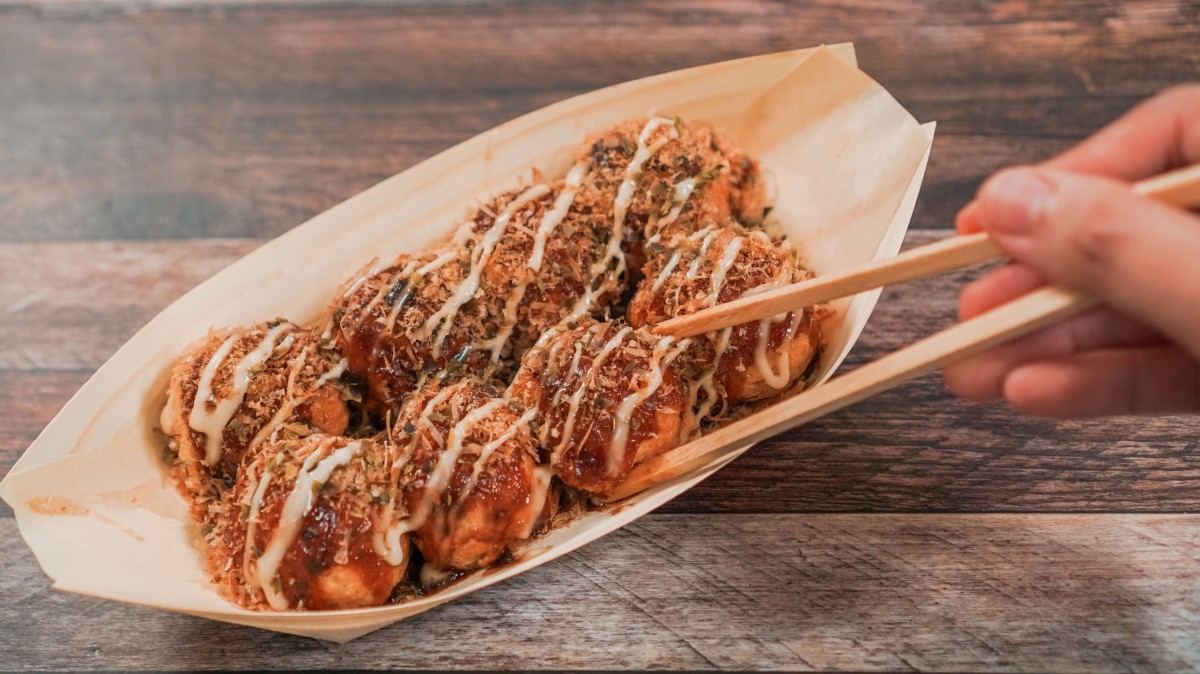
Speaking of festivals in Japan, one of the great pleasures is the gourmet food at the festival stalls lined up at the venue! In addition to classic B-grade gourmet foods such as takoyaki, okonomiyaki, and yakisoba, sweet sweets such as candy apples and cotton candy are also popular. In some areas, there may be food stalls using local specialties and local cuisine. Please look for limited gourmet food that can only be tasted at that place and make the festival even more exciting.
Visit the autumn festival to experience Japan's deep traditional culture
Autumn festivals in Japan are not just autumn events and events. It is a "living heritage" with the gratitude and bond of the people of the region, as well as centuries of history and culture. It is a rare opportunity to experience the deep spirituality and passion of Japan, which is different from the beauty of the fiery autumn leaves.
This fall, why not embark on a journey to your heart's content to experience Japan's traditions and passions?
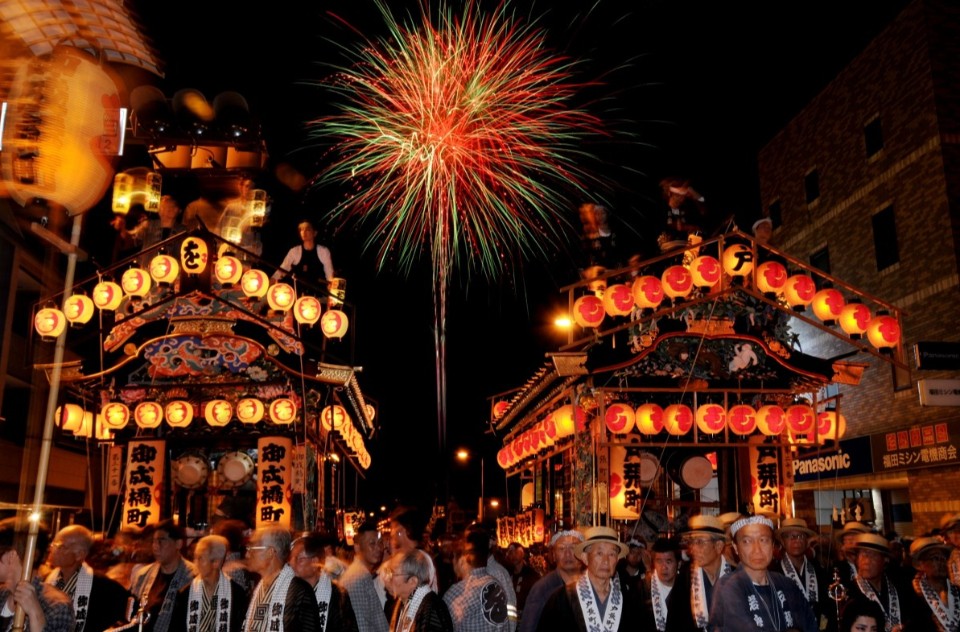
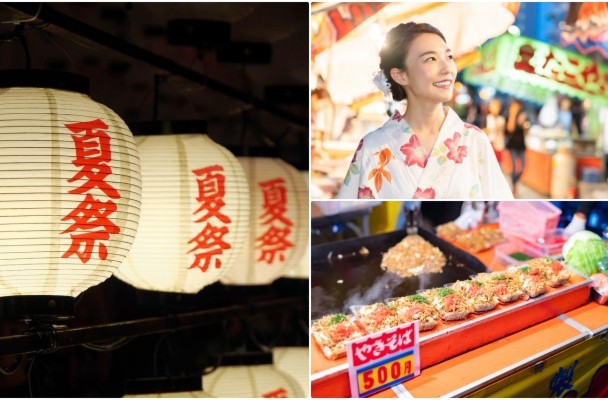
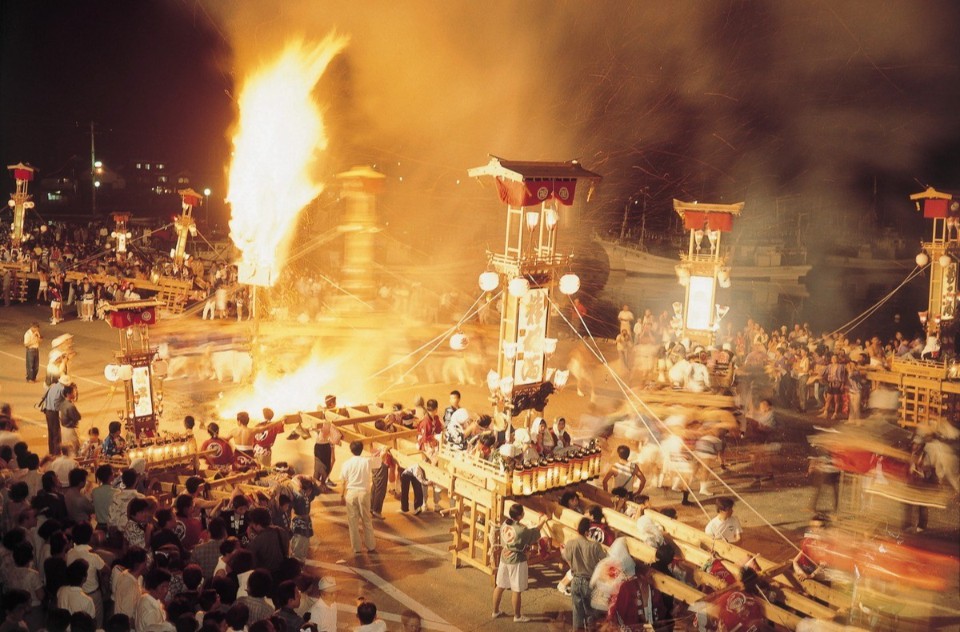
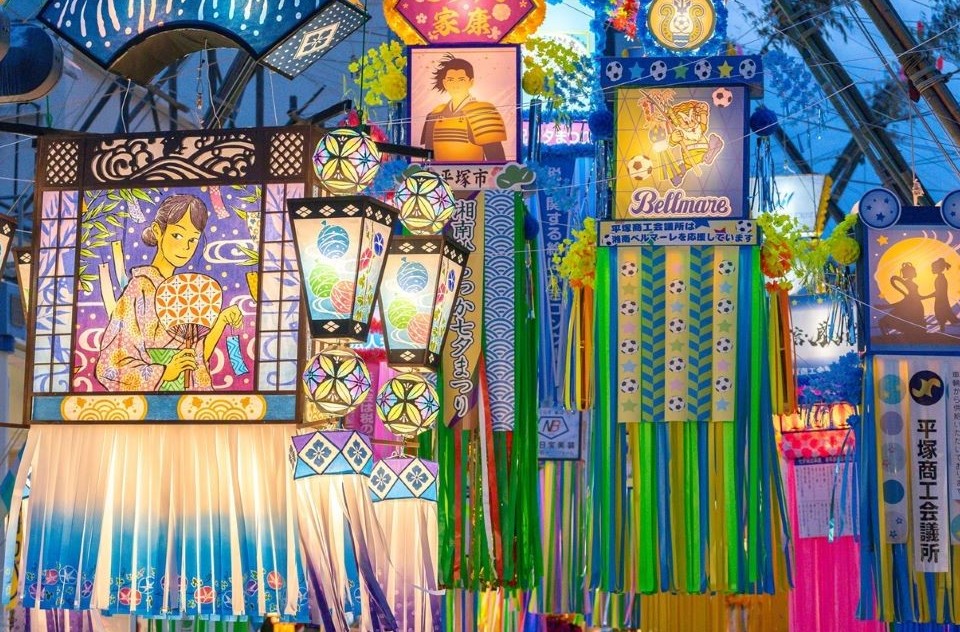


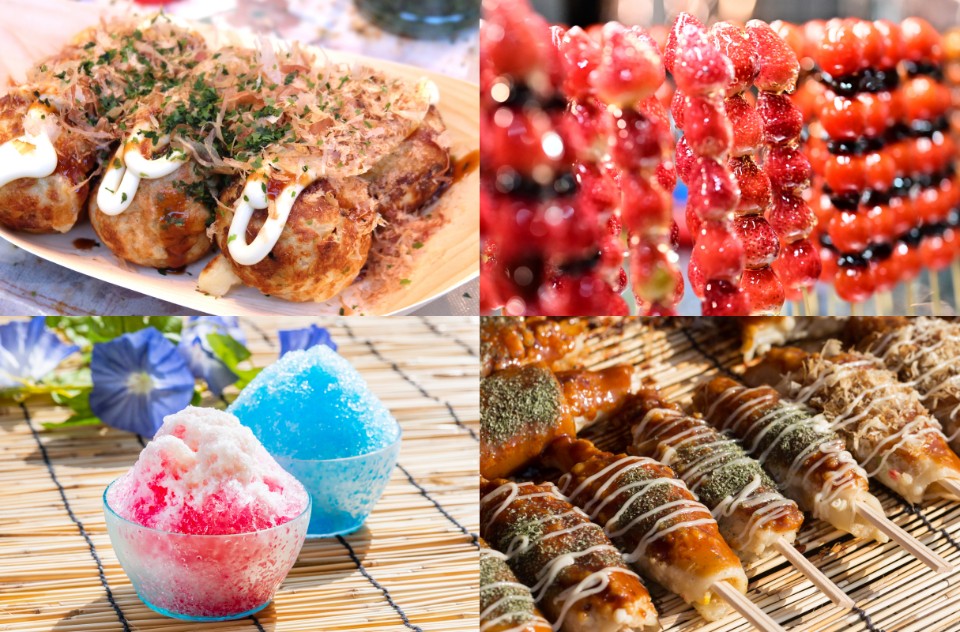
Comments